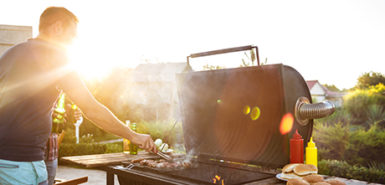
With the warm weather upon us, many people are starting to think about travel.
But before you hop in the car or head off to the airport, it’s wise to map out your plans.
COVID-19 restrictions continue to change in many places, but that doesn’t mean things are back to normal.
“We Americans are used to having things go the way we want them to, but we have to understand we are still in the midst of a pandemic and things can change rapidly,” said Rosemary Olivero, MD, pediatric infectious disease specialist with Spectrum Health Helen DeVos Children’s Hospital.
“Be flexible and aware of what’s going on around you at home, while in transit and at your destination.”
As you research trips, it’s important to learn what’s open, what’s closed and what’s expected of you in terms of health and safety guidelines.
“It’s gotten pretty standard to be aware of what’s going on locally,” Dr. Olivero said. “Prepare yourself in advance.”
Plan ahead
Travel in any form these days requires some homework, although the extent of your research will depend on the trip you’re planning.
Headed on an ocean cruise? The CDC has maintained extensive guidelines and precautions for travel plans on cruise ships.
Before you choose hotels or other places to stay, take a moment to learn about the guidelines, hours and restrictions.
What’s open and what isn’t? A hotel may be open for overnight guests, but they might also keep pools or other amenities closed in light of COVID-19.
The CDC also offers other tips and advisories for travel, including recommendations on testing for COVID-19.
If you’re relying on commercial travel such as airplanes, check online or call ahead to understand any restrictions. For airline travel, it’s also a good idea to bring your own pillow and blanket.
Mask up
When you’re in a crowded, tight area with people you don’t know, it’s best to play it safe and wear a mask. This applies not just to planes, trains and buses, but also when you’re in the ticketing and loading areas.
You should keep your mask on all the time in these areas, even when sleeping. The only time you should take it off is when you eat, Dr. Olivero said.
“When in doubt, wear a mask in a crowded area and when you’re in an area you’re not familiar with,” she said.
Traveling in your family vehicle will, of course, allows for quite a bit more freedom. You most likely won’t need to wear a mask in that instance.
But when your group stops for a break or stops somewhere to eat, Dr. Olivero said the masks should go back on.
Healthy habits
Good hygiene is paramount on any trip, whether traveling locally or abroad.
Masks, hand sanitizer and sanitary wipes are the most basic hygiene items—you should keep them on hand at all times. They come in handy whether you’re traveling by public transportation or personal vehicle.
Hand-washing is a must. Use soap and water and take 20 seconds to lather them up for a thorough wash. Hand sanitizer is also effective.
In addition to washing your hands before and after eating, use hand wipes on surfaces that might carry germs, such as tables, arms of chairs, public restroom handles.
Also, make sure you’re adequately prepared with medication and other needed items. You should bring a list of your medications, including dosage and frequency, in case you need refills.
Some helpful items for hygiene and first-aid kits:
- Band-Aids
- Hand sanitizer and wipes
- Masks
- Antibiotic ointment
- Aspirin or Tylenol
- Aloe gel for sunburn
- Antacids such as Tums, for upset stomach
- Pepto-Bismol tablets, for traveler’s diarrhea
 /a>
/a>
 /a>
/a>
 /a>
/a>